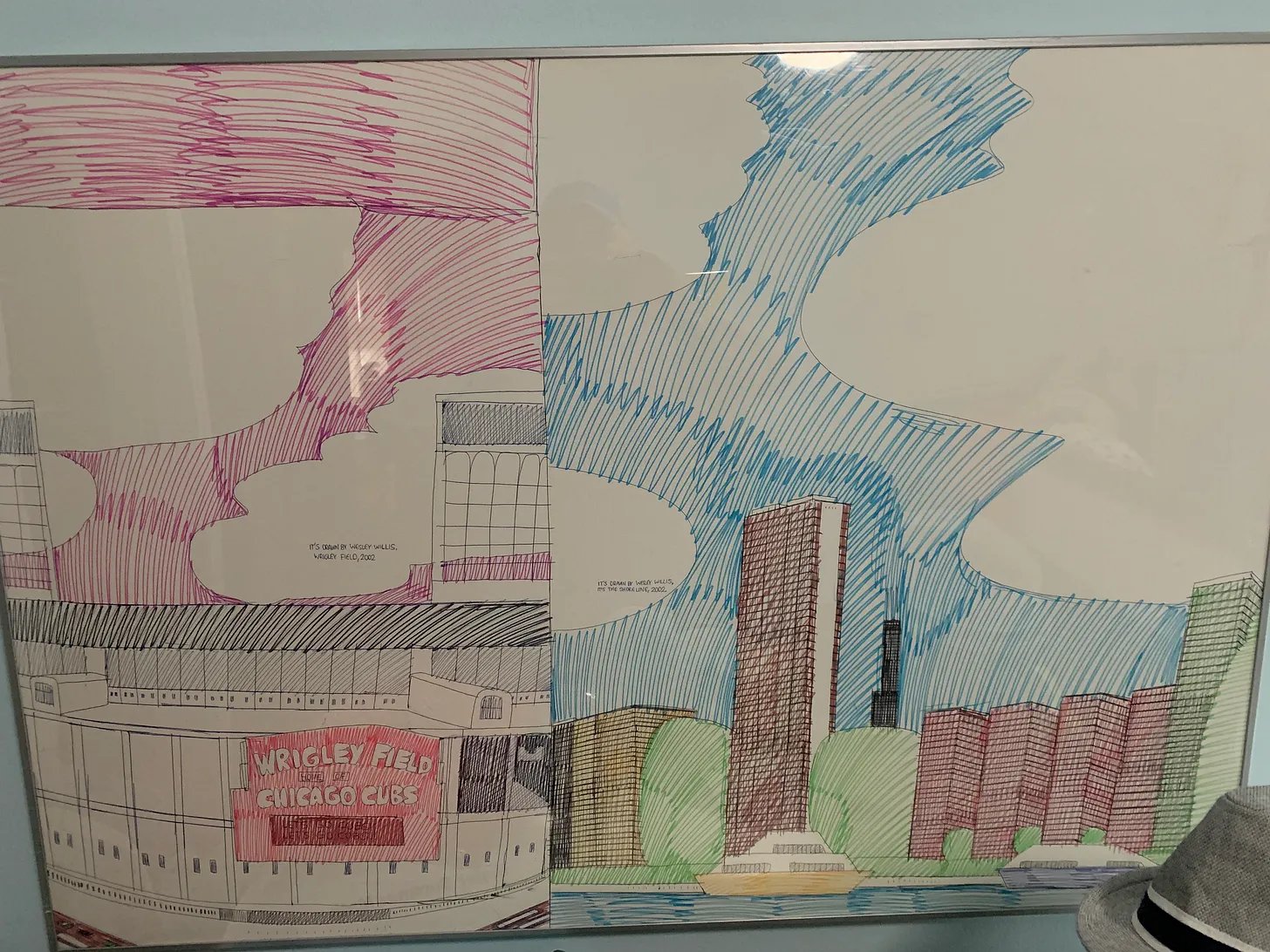Meeting Wesley Willis
On knowing the worth of your work
Meeting my Heroes is an occasional essay series from Matt Carmichael.
Wesley Willis was a punk rocker in Chicago and also an artist. The LA Times summed up what most people knew about him, describing him upon death in 2003 at age 40, “Wesley Willis, a 6-foot-4, 320-pound former homeless man who channeled his schizophrenia into an unlikely career as a rock music cult hero.”
I had friends who knew him a little bit. Or at least interacted with him frequently. One worked at the Wicker Park Kinkos where he would copy fliers or covers for his tapes. She said he had “demons” but was a gentle guy despite his size. But it was also intimidating that his preferred method of greeting was head-butting people.
I liked his music, at least in some contexts.
As a fine artist he generally drew with markers on poster board. He’d show up at shows at places like Metro and sell them. That’s where I met him. He was sitting on the steps with a pile of his artwork. I flipped through and found one I liked. It was a split panel of Wrigley Field and the river, looking along by the Sears Tower. Which is not named Willis Tower now after Wesley, though should be.
How much, I asked. $15, he answered. How about $10, I countered. He countered with “How about $20.” “Ok,” I replied, clearly out-negotiated and handed him a twenty.
But he also had a point. I think we all too often devalue our own work. And then people try to further devalue it or get “a good deal” on it. We also don’t always have obvious norms and values around our value. I thought I was in a situation where one might haggle. I was kind of wrong. Sometimes when people are hiring you, they might work for a huge corporation, but that doesn’t mean they have more money budgeted for that role to offer you. Sometimes they do. I had a boss who offered me slightly more than I asked for and bought a ton of loyalty and respect for not many actual dollars. But regardless, it’s important to know your own value, or what tradeoffs you’re willing to make.
I try to make money from people who have it, but also be aware of where the margins are a little thinner. I was at Metro that night to shoot a show as House Photographer. This was not a role I was paid for. Whatever amount I would have asked for would have been a deal breaker. I realize I was the only one in the building not getting paid directly for being there, and maybe that makes me a sucker. But I was willing to work for free in exchange for: access, ease of that access (I’d shoot an email to Jenny with the shows I wanted to shoot and she’d hook me up. No need to track down and pitch publicists); and keeping the rights so I could license the images elsewhere. And I met great people, including some heroes of mine, some great stories and connections and got extraordinary life experiences to boot. Working for Tweeter Center as their House Photographer I got all of that and also got paid, because they were an enormous corporation and could give me a small stipend which basically covered gas and some other expenses. It worked well for everyone involved, I hope.
I’m not quite sure what that Wesley Willis piece is worth today, but his artwork hangs in galleries. And in Andrew’s room.
Wesley Willis, you knew how to drive a hard bargain and I have much respect for that.
Rock over London. Rock on Chicago.

